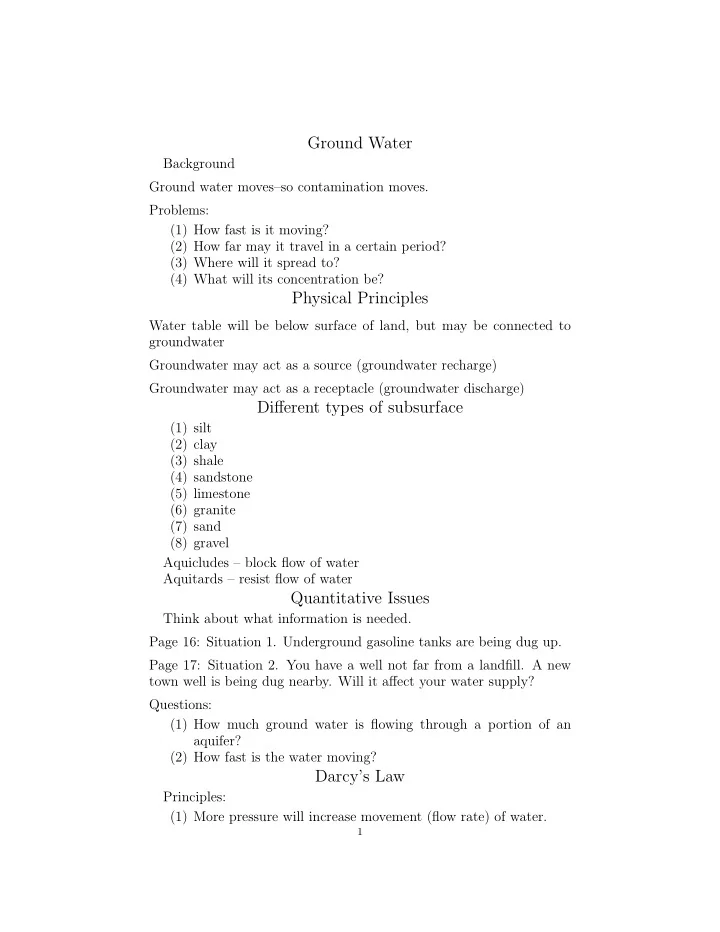

Ground Water Background Ground water moves–so contamination moves. Problems: (1) How fast is it moving? (2) How far may it travel in a certain period? (3) Where will it spread to? (4) What will its concentration be? Physical Principles Water table will be below surface of land, but may be connected to groundwater Groundwater may act as a source (groundwater recharge) Groundwater may act as a receptacle (groundwater discharge) Different types of subsurface (1) silt (2) clay (3) shale (4) sandstone (5) limestone (6) granite (7) sand (8) gravel Aquicludes – block flow of water Aquitards – resist flow of water Quantitative Issues Think about what information is needed. Page 16: Situation 1. Underground gasoline tanks are being dug up. Page 17: Situation 2. You have a well not far from a landfill. A new town well is being dug nearby. Will it affect your water supply? Questions: (1) How much ground water is flowing through a portion of an aquifer? (2) How fast is the water moving? Darcy’s Law Principles: (1) More pressure will increase movement (flow rate) of water. 1
2 (2) Longer length of aquitard substances will decrease the flow rate. (3) Larger cross section will increase flow rate–but not the speed! (4) Flow rate will depend on the properties of the geologic medium under consideration. Parameters h 1 , h 2 are the heights of the water above some arbitary plane. ∆ h = h 2 − h 1 L is the length of the medium through which the water is moving. A is the cross sectional area. Q is the total flow rate, measure in volume per unit time. So Q ∝ ∆ h × 1 L × A Darcy’s Law Q ∝ ∆ h × 1 L × A Let K be the constant of proportionality. K is called the hydraulic conductivity. Values for the hydraulic conductivity for different sub- stances are given in Table 2-1 on page 26. We may write Q = K × ∆ h × 1 L × A . If we let i = ∆ h L , we get Theorem 1 (Darcy’s Law) . Q = KiA . i is called the hydraulic gradient. Average Concentration Question: What is the average concentration of a contaminant? Solution: Divide amount of the contaminant that leaks per unit time by the water flow rate. Interstitial Velocity Equation Interstitial Velocity is the speed at which the molecules of water are progressing in the direction of movement. Let v represent interstitial velocity q – flux – amount of water going through cross-section of unit area – obtain by setting A = 1 in Darcy’s equation, so q = Ki η – porosity
3 v = q η = Ki η Use of Head Contour Diagrams Key fact: Ground water tends to move in a direction perpendicular to the head contour line.
Recommend
More recommend